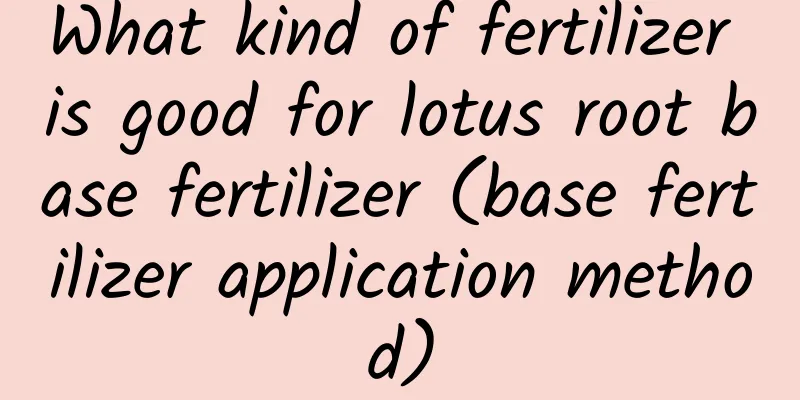What’s going on when the leaves of succulent plants wilt and become soft?

|
Succulent plants are favored by more and more plant lovers because of their unique shapes and rich colors. However, in the process of caring for succulents, sometimes you may encounter the situation where the leaves wilt and become soft. So what is going on when the succulent leaves wilt and become soft? Let’s take a look below. 1. Water shortage Although succulents are drought-tolerant, it does not mean that they do not need water. If you don't water them for a long time and the soil is too dry, succulents will wilt due to lack of water. At this point, the leaves will lose moisture and become soft and wrinkled. In this case, timely replenishment of water is the key. But also pay attention to watering in moderation and avoid watering too much at one time to prevent root rot. 2. Excessive watering In contrast to lack of water, excessive watering can also cause the leaves of succulents to wilt and become soft. Succulent plants are afraid of waterlogging. If the soil remains moist for a long time, the roots will easily rot, which will affect the normal growth of the leaves. Therefore, be careful when watering to ensure that the soil is neither too dry nor too wet. If you find that the leaves are becoming soft and the soil is moist, it may be caused by root rot. At this time, you need to check the root system, trim the rotten parts, and replace them with dry new soil. 3. Insufficient light Succulents prefer a sunny environment. If it stays in the shade for a long time, photosynthesis will be insufficient and the leaves will become weak. At this time, the succulents need to be moved to a place with sufficient light for maintenance, but care should also be taken to avoid prolonged exposure to strong sunlight to avoid sunburn. 4. The temperature is too high or too low Succulent plants have certain temperature requirements. Too high or too low temperature will affect its normal growth. In high temperature environments, succulents may experience heat dormancy, causing the leaves to lose water and become soft; in low temperature environments, they are prone to frostbite. Therefore, it is necessary to adjust the maintenance environment in time according to seasonal changes to provide a suitable growth temperature for succulents. 5. Pests and diseases Some diseases and pests can also cause succulent leaves to wilt. For example, root rot can destroy the normal function of the root system, causing succulents to be unable to absorb enough water and nutrients; while pests such as mealybugs can suck the juice from the leaves, causing the leaves to become weak. When pests and diseases are discovered, appropriate prevention and control measures need to be taken in a timely manner. 6. Pot soil problem Problems such as poor air permeability and insufficient nutrients in the potting soil can also cause the leaves of succulents to wilt. Succulents need loose, breathable and well-drained soil to ensure normal breathing and growth of their roots. If the soil is too sticky or lacks nutrients, it is necessary to replace the soil or supplement nutrients in time. In response to the above reasons, we can take the following countermeasures: Reasonable watering: Water reasonably according to the variety of succulents and the growing season, and water when the soil is dry and when it is wet. Increase light: Move the succulents to a sunny location, but be careful to avoid direct sunlight. Adjust the temperature: Move the succulents to a place with suitable temperature. Prevention and control of pests and diseases: After discovering pests and diseases, appropriate pesticides should be sprayed in time for prevention and control. Improve potting soil: Choose potting soil with good air permeability and fertilize regularly. In addition, when caring for succulents, you need to pay attention to the following points: Regular inspections: Check the growth of succulents regularly and deal with any problems promptly. Choose suitable potting soil: Choose potting soil with good air permeability and drainage. Avoid excessive touching: The leaves of succulents are relatively fragile, and excessive touching may cause leaf damage. In short, the wilting and softening of succulent leaves is the result of the combined effect of multiple factors. As long as we discover it in time and take the right measures, succulents will recover quickly. In the process of caring for succulents, we need to be patient and careful and provide them with a suitable growth environment and management measures.
|
<<: Open-air cucumber management technology
>>: Time and method of planting loofah outdoors
Recommend
How to prune rubber trees? Methods and diagrams of pruning branches and leaves
Rubber tree pruning time Rubber trees need to be ...
How to grow black orchid
1. Breeding environment 1. Soil: Mo Lan likes a h...
Cultivation methods and precautions of bulbous begonia
Farming methods soil To grow bulbous begonias, th...
How to eat lemongrass
Can lemongrass be eaten? Lemongrass is one of the...
Cultivation methods and precautions of Sedum
1. Maintenance methods 1. Substrate selection: Se...
How to grow chrysanthemum on the balcony
1. Soil container selection In fact, the soil req...
Growth habits of different ivy species
Habit of Hedera helix Yellow-spotted ivy is a typ...
How to transplant threaded iron
Threaded Iron Band Root Transplant When transplan...
Sweet potato cultivation technology and management methods
Sweet potato is a commonly grown grain crop that ...
When and how to change the soil of Strelitzia reginae
Time to change the soil of Strelitzia reginae The...
How do plants survive the winter?
Method 1. Take off all the "leaves" on ...
The placement of the fortune tree
1. Living Room The growth of the money tree requi...
The difference between cherries and cherries
1. Different appearance Although the two are simi...
Cultivation methods and precautions of Verbena
1. Loosen the soil Verbena is an easy flower to g...
Apricot tree cultivation methods and precautions
Water and fertilizer for apricot trees When the n...









